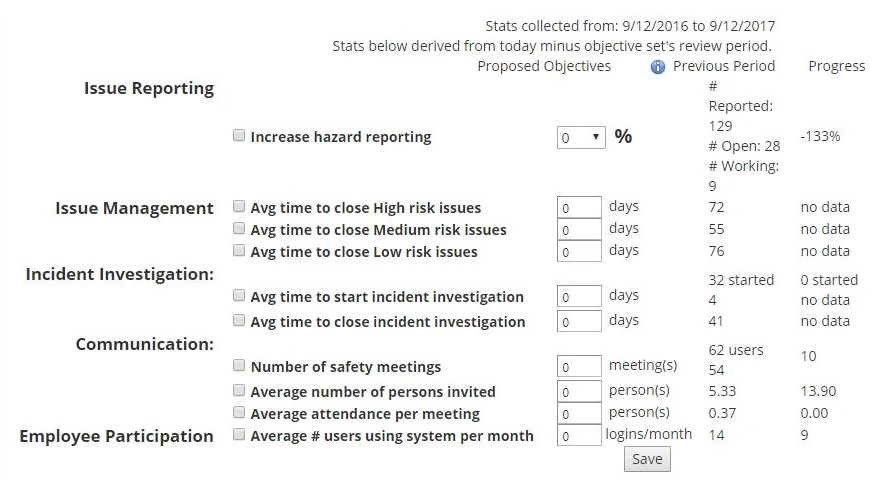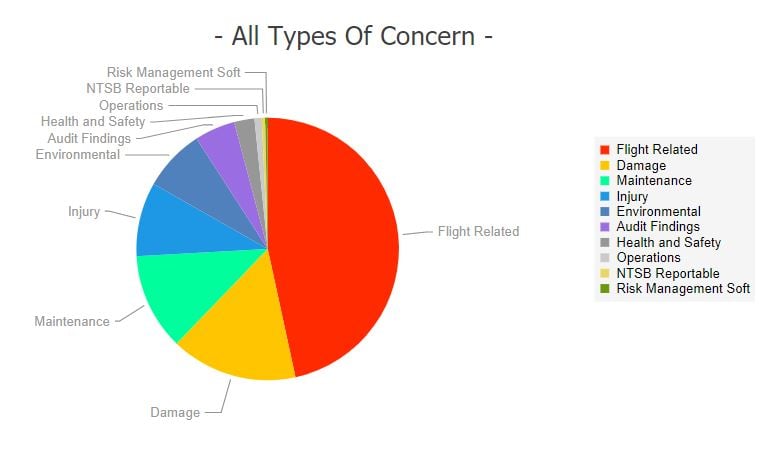What Are Key Performance Indicators (KPIs)

Key performance indicators (KPIs), also known as Safety Performance Indicators (SPIs), are data metrics used to track performance in your aviation safety management system.
In the case of KPIs, “performance” is the most important measurement to measure the success of your SMS.
Moreover, “performance” isn’t just safety performance. KPIs can address performance for:
- Quality;
- Operational;
- Security; and
- Financial.
These categories of performance can have important implications on evaluating SMS effectiveness, and so may be monitored by KPIs as well.
KPIs are chosen based on your safety objectives. Each safety objective will have associated KPIs. In this way, KPIs will always be tied to the most important areas of performance – i.e., your company’s core objectives.
Why KPI Monitoring Matters
Monitoring KPIs is how you measure and monitor the performance of your safety objectives. Whereas safety objectives are frequently qualitative targets, KPIs are quantitative metrics.
When you monitor KPIs in your aviation SMS, you in turn monitor the performance of safety objectives. In turn, you also monitor the performance of your safety goals, as safety objectives are created based on safety goals.
1 – Review Safety Objectives

The first step to monitor KPIs in your aviation SMS program is to simply make sure your safety objectives are:
- Up to date;
- Pertinent to your organization;
- Measurable; and
- Specific.
If safety objectives fit these requirements, it will be difficult, if not impossible, to monitor their performance. Additionally, such objectives may be irrelevant to your organization if they are out of date.
Make any updates to your objectives after reviewing them.
Related Aviation Key Performance Indicator (KPI) Articles
- SMS First Steps: KPIs
- 4 Pillars | Truth About SMS Continuous Improvement and KPIs – With Free KPI Resources
- Essential KPIs for Poor Hazard Reporting Cultures in Aviation SMS - With Free KPI Resources
2 – Ensure KPI List Matches Objectives
After updating your objectives, ensure that each KPI is closely tied to an objective. Likewise, each objective should have a corresponding KPI.
For example, consider the following objective/KPI pair:
- A safety objective of “Reduce fatigue-related incidents 10%”; and
- A KPI of, “Fatigue classifications in a current year vs same time in the previous year.”
In this example, the KPI measures the safety objective and allows you to assess whether or not the safety objective is being met. Review your list and make any updates where needed.
3 – Tie KPIs to Classifications

One of the most reliable methods for creating KPIs is tying your KPI to classifications. This simply involves ensuring that many of your KPI metrics are based on classifications (where applicable). See Skybrary on performance monitoring for more information.
Consider some of the following examples of KPIs that are tied to classifications:
- Bird strike classifications this season;
- Lost time injury classifications this year; and
- Near miss classifications.
These three KPIs address objectives concerned with reducing bird strikes, lost time injuries, and near misses. By tying KPIs to classifications, you are able to assess the number of reported issues related to your objectives.
4 – Have Automated KPI Report Charts

Having automated KPI charts is the easiest way to assess overall performance. These charts visualize your KPI performance and help you assess which KPIs have been classified the most/least.
In general, the more a KPI is classified, the less performant it is. KPI charts should update automatically as issues are classified with KPIs. Ideally, you should be able to view KPI charts based on their classification type, such as Type of Issue KPIs or Hazard KPIs.
Final Thought: Reviewing Control Measures Based on KPIs
Over time, you should be able to spot out KPI anomalies that are not performing. They will be classified more than other KPIs.
In this case, you will need to review risk controls relevant to the KPIs and update them.
For more information about KPIs, see these lists of KPIs.
Last updated October 2025.






